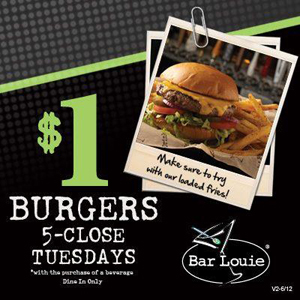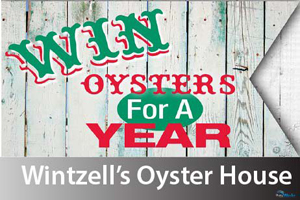
Advertising can be effective, but like all marketing activities it must be applied in the right way. Big image-building campaigns are for the multinationals that already have an image. And before you put an ad in another guide or newspaper, keep this mantra in mind: If advertising isn’t about making a sale, or achieving a specific goal, then don’t do it.
Your advertising should be about performance. Customers should do something following your advertisement, not just acknowledge it with a nod. That means you must have a system for tracking and measuring the success of a campaign, a compelling message and a clear call to action.
By that, we mean telling your customer exactly what to do. For every marketing piece, whether it’s an ad, the yellow pages or an email, you must ask them to contact you, come to your business, purchase a product, refer someone else to you or act in some way. Otherwise, it’s a waste of marketing money and you’d be better off not doing it.
Make sure to follow these guidelines:
1. Your message must appear in a publication or place that is targeted to your customer profiles. If your restaurant’s main added value is a kid-friendly atmosphere and family menus, then make sure to be present in local day care centers, school newspapers and children’s stores.
that clearly shows the benefit to the reader. What is the biggest benefit that you can give to your customer? Identify it and then put it in the headline. A benefit answers the question: “What is in it for me?” Pull the customer in by having an ad that is based on the customer’s needs and the benefits you provide. Make them want to stop and read your ad because they can clearly see what is in it for them. You may have a great offer, but if no one stops to read it, the ad certainly won’t be effective. More people read the stories with the most compelling headlines. Headlines such as “A Free Cocktail When You Come On Date Night” or “Kids Eat Half Price on Weekdays” are good examples of clearly stated benefits.
Note that your restaurant name or logo are not good headlines. Be wacky, controversial, funny, state your offer or guarantee—anything that will make people read it. Use strong phrases such as “how to,” “free” and “discover.” Make sure to include “you” in the headline (you do want to talk directly to the person, after all). Don’t hesitate to use different headlines to target various subsets of your target audience. Try creative headlines such as “Guaranteed Marital Bliss (no more fighting over the washing up!)” or “A Successful First Date or Your Money Back!”
3. Have a compelling offer. An offer both makes the reader act and allows you to track whether an ad is successful. The offer should be compelling enough that the reader says to himself “Why wouldn’t I do this? What do I have to lose?” In a word, it needs to be irresistible. A compelling offer may or not be free. You might decide to use recipes, gifts, invitations or time with the chef as a compelling offer instead of giving away something free. If you do decide to use a free offer, then make sure it is indeed compelling. Just because it is free does not necessarily mean that it will be effective. Giving away a glass of wine when a party of two or more comes in to eat may not be a compelling enough offer to drive a customer to act. Two free desserts, on the other hand, might be enough to grab the customer’s attention.

If it is indeed compelling, then put it in the headline. If it’s a free offer, then by all means shout it out. Everyone wants something for free, but just because it is free doesn’t mean it is compelling. It needs to be free and answer a need, providing what the customer perceives as value. Make sure that you clearly state the value in monetary terms. Remember, money talks, so impress the customer with the value. “A free drink” sounds appealing, but a cocktail worth $15 is more meaningful. $15 is, after all, $15. Have the confidence in your establishment to put it all out on the line. The customer will respond.
Credibility and conversational language key

4. For more credibility, make your ad look like news or an advertorial rather than a traditional ad. Educate readers in the advertisement so that they want to learn more and see you as an expert. Include a list of important points for the customer, such as “The five things you should know about eating organically in restaurants” or “Why it’s important to eat local produce.” There is a lot of competition for people’s attention these days. Don’t look like everyone else; stand out from the crowd.
5. Use conversational language that builds trust with prospects and great compelling copy. If you need to, get someone to help; it’s worth the investment to get it right. Have a reason for your offer: “To celebrate our grand opening,” “To welcome a new member to the team,” “It’s our birthday.” Create a bond with the reader, showing that you understand their issues. Relate to them emotionally and make them want to read the next line. The better you understand your customers, the better, more effective copy you can write. Use imagery and paint a picture so that the reader can imagine himself using your services so well that he is almost already there in his mind.
Get personal. Add a photo of yourself, not just of the business, and write your advertisements as if you were writing to one person, not to an entire group. People want to know there is someone behind the service, that someone else is thinking about them. Remember, creating a relationship provide a competitive advantage over the competition.
6. Have a clear call to action that tells the person exactly what to do: “Call 222-222-2222 for a reservation.” “Book now, seats are limited.” Add an expiration date to any offer, which will create a sense of urgency and encourage people to act.
People are very good at following instructions, but surprisingly inept if you don’t tell them exactly what to do. Give them clear and very specific instructions—“Call now,” “Book your table,” “Tell your friends”—and tell them to bring in a copy of the ad. The call to action must be easy to understand and do. If anything is confusing or difficult, people just won’t do it.
Testimonials, measuring results
7. Overcome skepticism. Use a guarantee or have a perceived expert speak for you. “The best sandwich in town or it’s on us.” “We are so convinced that you will love your meal, that if you are not delighted, you don’t pay.” “Mr Jones says that we make the best pizza in town.” Guarantees are very important to make customers comfortable with the risk they are by giving over their hard-earned money to try your restaurant. And they show a level of confidence in your own business that is reassuring. While a few people will take you up on the guarantee, if you are confident, the new business will more than cover any refunds.
8. Use testimonials, especially if they come from the media, local critics or celebrities. Put the testimonials in quotations and bold font, including the name of the person and the publication if appropriate.
9. Measure everything you do. State that customers must bring in the ad or refer to it to receive the special offer. In this way you can see exactly how much business you have gained by the ad, calculate your return on investment and decide to modify the ad, run it again or eliminate it, depending on the results.
Amy Foxwell is a restaurant owner, a renowned expert in small business and restaurant marketing, author of Win Win Marketing and the creator of the Win Win Restaurant Marketing System.




